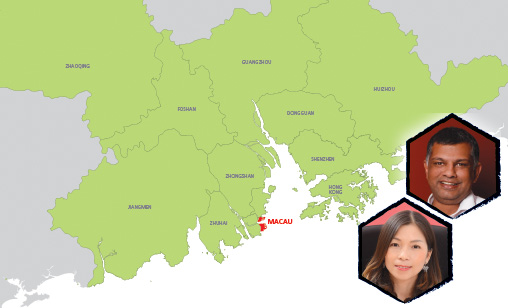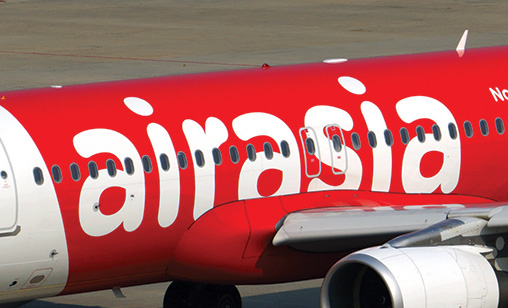Cover Story
Will sleepy Macau awake?
Macau is ending its aviation monopolies and is considering more airline entrants as China’s Greater Bay strategy takes hold in the Pearl River Delta.
July 1st 2019
Repeat visitors to Macau make comparisons about the changed enclave: low-rise buildings to towering complexes, backwater to high end, marsh land to casino land. Read More » Yet aviation has changed little since the construction boom and the doubling of visitors Macau has experienced in the last decade.
Now the Special Administrative Region (SAR) is finally poised to grow and re-define the positioning of its under-utilised airport in expanding and congested southern China. And Macau’s regulators are helping.
 |
Recently, they declined to renew the historical concession agreements that made aviation in Macau a series of monopolies from one airline to one ground handler. Investors are considering a new airline for Macau. Foreign airlines are weighing growth out of the airport with expectations operating costs will be reduced.
In 2015 Macau surpassed its previous peak traffic achieved in 2007. The growth trajectory was halted when cross strait flights between Mainland China and Taiwan opened. Macau handled 8.3 million passengers in 2018.
AirAsia Group boss, Tony Fernandes, has said AirAsia would consider a local unit. AirAsia is Macau’s largest foreign airline if all its subsidiaries are treated as one entity. But observers wonder what the benefits would be for AirAsia to take such a step. The group already can link Macau with many major countries via its existing airlines that are based in considerably cheaper markets than Macau.
A Macau base would not give access to the domestic Chinese market, which AirAsia sought with its lapsed AirAsia China joint venture. Strong desire for Macau-mainland China flying would come up against Air Macau, which has a shareholder influential in regulatory matters: Air China.
Utilising Macau as a transfer base between Northeast and Southeast Asia would not offer the scale of AirAsia’s existing major connecting points in Kuala Lumpur and Bangkok.
What value does Fernandes see in setting up in Macau? And is he serious? “I’m not surprised he said that, but whether we can do it is another thing,” said AirAsia Hong Kong and Macau CEO, Celia Lao. Lao has been with AirAsia since the group’s first flight to Macau in 2004, a quieter period that saw Fernandes travel more within the group’s network and take time to attend the Macau inaugural flight.
AirAsia has expanded its flying and non-flying businesses and Fernandes has taken up interests outside aviation. Lao said it was a homecoming for Fernandes when he returned to Macau two years ago and found that amongst the airport and authorities, “the faces are the same, he’s talking to the same people”.
That continuity of leaders and support encouraged Fernandes to unexpectedly propose big plans. “He’s sending a message to the local government that AirAsia is open. The government is thinking which airline they want to introduce as the second airline,” Lao said. “It’s something we need to study further.”
Macau has announced it will not renew Air Macau’s concession agreement that will expire in November 2020. The SAR has not outlined its plans to expand air transport licenses or say if it would permit one or multiple new entrants.
Macau is more than itself. It also is a gateway to the region. On average, half of the passengers on AirAsia’s Macau flights are from mainland China, stretching from Zhuhai, which shares a land border with Macau, to Guangzhou. Zhuhai has a local airport with few flights and is not targeted for high growth by Mainland planners.
 |
Lao would like to see dedicated counters at immigration points for passengers transiting from China to Macau airport. The volume of land crossings means queues can be unpredictable and often long. Dedicated counters would speed journeys and provide consistency of planning. The Greater Bay Area economic strategy calls for improved cooperation around southern China and could be the impetus to introduce the dedicated counters Lao seeks.
The remaining 50% of AirAsia’s Macau passengers are split between Southeast Asia at 40% and Macau (10%), a reflection of the small local population. The Southeast Asian share varies by market. AirAsia’s Thailand flights can see upwards of 70% Chinese passengers visiting Thailand, while the majority of AirAsia’s Malaysia flights are Malaysian leisure passengers.
Awareness of the region’s attractions needs to be marketed, from waterparks to historical sites around Zhongshan. Promotions can be as simple as including translations from Chinese to the main languages of passengers, Lao said.
It also requires changing the perception of Macau as solely a gambling destination. AirAsia, like Macau tourism, intentionally excludes casinos from marketing material, but it is up against advertisements from the deep-pocketed gambling sector. “They have budget. They are creating this image to the outside market that Macau is about casinos,” Lao said.
AirAsia does not subscribe to the view that Macau will develop into an alternative airport to congested Hong Kong. Hong Kong International Airport is mostly full with its third runway not scheduled for completion until 2024. Even after the third runway opens, demand will be higher than capacity.
“We can never build fast enough,” Airport Authority Hong Kong CEO, Fred Lam, said at the annual Airports Council International world conference in April. “With all the expansion plans that we all have – Hong Kong, Shenzhen, Guangzhou – there will still be a shortage of capacity,” he said.
The journey between Macau airport and Hong Kong is clunky. There is a ferry terminal near Macau airport but it is not integrated with border clearance processing. After immigration clearance into Macau passengers must pass through exit immigration thirty minutes later at the airport. As well, the spread between Hong Kong and Macau air fares is not sufficiently attractive to galvanise passengers into considering alternatives.
Awareness also is an issue and Lao said that rests with her. “How to change habits? An airline needs to lead,” she said. AirAsia is not grouping Macau and Hong Kong together on its website the way it would with co-terminal airports, such as Tokyo Haneda and Tokyo Narita. It is a regulatory issue that can also apply to secondary European airports a considerable distance from the main city or to U.S. airports that function as cheaper gateways for Canada. “We need to be very careful to stay on our marketing message,” Lao said.
Another potential option for AirAsia is application of fifth freedom rights. Lao praised authorities in Macau for pursuing liberalisation. The AirAsia group has a limited fifth freedom history and Lao hinted Macau may be too small for fifth freedoms now. “We need to balance demand from both ends,” she said.
JC Cambodia International has started fifth freedom flights, with its Phnom Penh-Macau flight tagged with Mandalay in both directions. This seems more an opportunity to be a local airline in the Macau-Myanmar market. Phnom Penh to Mandalay non-stop is shorter than Macau-Mandalay.
Qatar Airways has received rights for a fifth freedom cargo service from Macau to North America. Turkish Airlines was reported in the local Macau press to be interested in a passenger service to Macau.
Some wonder if this liberalisation, coupled with permitting a second ground handler to open at the airport, could see Macau rely on foreign airlines. This could produce growth for Macau while lowering political and economic risk from allowing another local airline to enter the market.
Ground handling is solely provided by Menzies Macau, a joint venture between global handler Menzies, Air Macau and other parties. Industry observers said ground handling in Macau is one of the most expensive and inflexible [in the region] because it is a monopoly operation. Lao would only acknowledge AirAsia’s ground costs are high.
Managing partner of consultancy Skylight Aviation, Steven Dickson, said airlines should expect to pay more in Macau relative to charges elsewhere in Asia. This has saddled Macau airport with having to especially incentivise new services to overcome ground handling costs. “I think they’ve always been shown as cooperative,” he said of the airport and civil aviation authorities. “The evidence is in the number of routes and airlines.”
Macau is yet to announce the outcome of a public tender for a second ground handler, ending the Menzies monopoly. “I want to see a more competitive marketplace to support growth from the customer and to create real competition in ground handling to better support the airline community,” Dickson said.
But could a second ground handler radically lower costs – or gain scale? A new ground handler may have to wait to convert customers who have signed long-term deals with Menzies to switch.
Airlines are expanding their ground companies, commonly MRO but also in handling. There is intrigue but worry if Macau’s ground handling tender selects Ground Team Red (GTR), a SATS-AirAsia joint venture with wide eyes. An intra-group ground handler could help AirAsia in Macau, but potentially not deliver a step change in charges for other airlines – or new entrants.
One disclosed start-up is 888 Macau Airlines, founded by former Viva Macau executive Joseph Said, who is seeking investors for the proposed short and long-haul airline.
Viva Macau’s collapse was complex. It operated under a sub-concession agreement with Air Macau. Air Macau vetoed various parts of Viva’s business plan, including destinations Air Macau did not serve nor planned to do so.
There have been developments in low-cost strategies since Viva’s failure, so a new entrant would be advised not to avoid a Viva revival. But Viva’s extraordinary situation also means Viva’s history should not necessarily be a deterrent.
A new entrant would be in a different landscape because it would have greater freedom in a larger market. Also changed is Air Macau, which has significantly improved from a decade ago. Under Air China ownership, Air Macau has stabilised and grown to be a local airline. It previously operated as a hub for mainland China-Taiwan flights before cross strait flights opened. Air Macau is re-fleeting. It received its first A320neo in April.
Yet Air China seems to have limited Air Macau’s ambition, perhaps fulfilling enough local needs without infringing on neighbouring Cathay Pacific, in which Air China holds a 29.9% equity. There is a similar dynamic at play across the Hong Kong border in Shenzhen, where Air China’s Shenzhen Airlines had a limited international footprint – and no long-haul flights – until the threat of local competition saw Shenzhen Airlines expand.